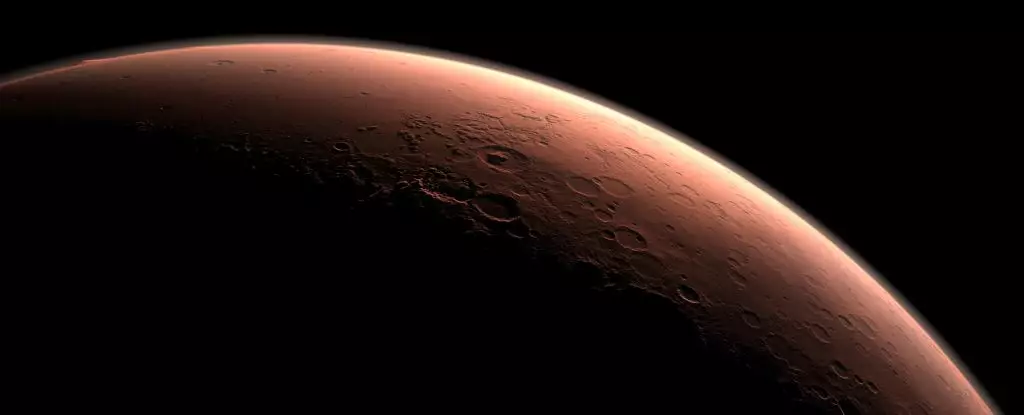The quest for extraterrestrial life has long captivated scientists, dreamers, and the curious public, centering much of its attention on the enigmatic planet Mars. Despite the absence of definitive evidence proving life on Mars, historical missions, particularly the Viking landers of the 1970s, laid a foundation for future exploration. However, as we delve deeper into their findings with contemporary understanding, it becomes increasingly apparent that we might have overlooked crucial signs of life while structuring our analyses in ways that undermined their very existence.
In 1976, humanity’s first successful endeavors to land on Mars commenced with the Viking missions. These landers were equipped with biological experiments designed specifically to seek signs of life within Martian soil. Among these experiments was the gas chromatograph-mass spectrometer (GCMS), which identified a variety of chlorinated organic compounds. Initially perceived as potential contamination from Earth, recent understanding suggests these compounds may be indigenous to Mars. Despite the importance of this finding, the ambiguity surrounding the potential biological origins of these chlorinated compounds left scientists at a crossroads.
The exploration was not limited to chemical analysis. Both Viking landers conducted additional tests aimed at identifying microbial life, including the labeled release and pyrolytic release experiments. These analyses hinted at the existence of biological activity. However, they were marred by inconsistencies. The pyrolytic release tests, for instance, suggested positive responses that conflicted with findings from the gas exchange experiment, which indicated no signs of life. This puzzling result created a dichotomy that scientists have struggled to interpret for decades.
In light of emerging research, we must critically reevaluate the experimental protocols of the Viking missions. Astrobiologist Dirk Schulze-Makuch has raised an essential point: our methods may have inadvertently destroyed potential evidence of life. The heating process used by the GCMS could result in the incineration of any organic material we aimed to study. If we consider this a possibility, it suggests that evidence of microbial life may have been present in the Martian samples but was lost due to our experimental procedures.
Moreover, Schulze-Makuch’s assertion that we approached Martian research with an Earth-centric perspective raises a profound question: how much did our assumptions about life’s requirements on Earth cloud our judgment? The belief that Martian life would thrive in aqueous conditions ignored the possibility that life could have adapted to arid environments. Mars is known for its dry conditions, and adapting our experiments to account for these unique circumstances might be critical in the quest for Martian life.
As we reflect on our historical attempts, Schulze-Makuch suggests that future missions need to prioritize the search for dry-adapted life forms. His hypothesis regarding life that might utilize hydrogen peroxide as an alternative biochemical solution could provide a new lens through which to analyze Martian ecology. The results from the Viking missions, he argues, could align with the prospect of life that has evolved mechanisms to survive in inhospitable conditions, dismissing the limiting viewpoint that life must need moisture to exist.
By recognizing that life may have thrived in the harsh confines of Martian soil under peculiar conditions, we open the door for revised experimental designs. Reassessing previous findings through this more open-minded approach may provide insights that were previously disregarded. The inconsistencies observed in Viking experiments warrant reexamination, as they could indicate that signs of life were momentarily seen and then overlooked.
In retrospect, the Viking landers not only served as a benchmark in space exploration but also as a reminder of the importance of being adaptable and innovative in scientific inquiry. The lessons learned from their missions compel us to adopt a more holistic understanding of Martian biology. Hence, a renewed focus on life detection in the pursuit of future Martian missions is essential. It is not enough to simply replicate earlier methods; we must develop new strategies that embrace the complexities of Martian life and its ecological context.
The search for life on Mars remains a tantalizing and open question that calls for both humility and curiosity. Only by acknowledging the limitations of our previous endeavors can we hope to unlock the secrets of the red planet and step closer to answering one of humanity’s greatest questions: are we alone in the universe? With fresh perspectives and enhanced techniques on the horizon, the next mission could bring us a step closer to finding life, whether in the familiar form we know or in a surprising, dry-adapted guise.


Leave a Reply